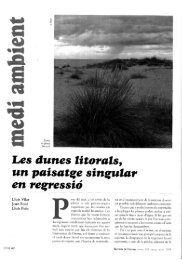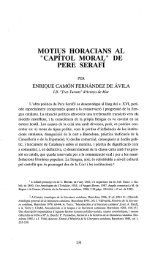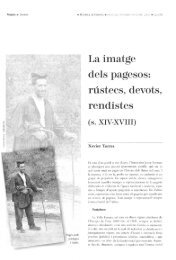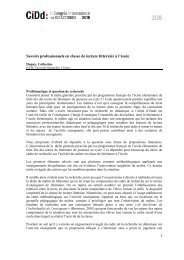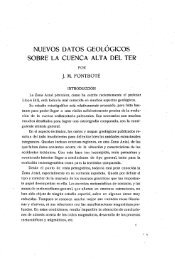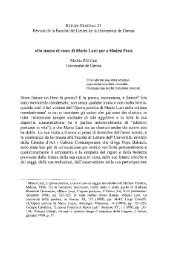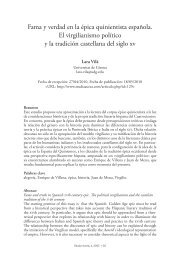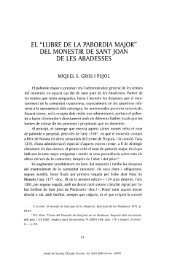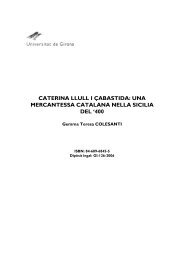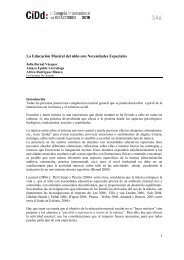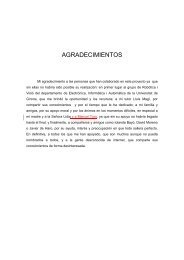257 Susann Fischer: The Catalan Clitic System. A Diachronic ...
257 Susann Fischer: The Catalan Clitic System. A Diachronic ...
257 Susann Fischer: The Catalan Clitic System. A Diachronic ...
Create successful ePaper yourself
Turn your PDF publications into a flip-book with our unique Google optimized e-Paper software.
Recensions 259<br />
Particular analyses are dismissed, such as Martineau’s (1991) treatment<br />
of clitic climbing in Old French, but no alternative proposal is made to<br />
encompass Old French and <strong>Catalan</strong>. It should also be pointed out that,<br />
contrary to <strong>Fischer</strong>’s stances, Old <strong>Catalan</strong> presented sentences without<br />
clitic climbing, such as (3):<br />
(3) e no m cal dar-hi fe. (March, Poema 20.7)<br />
<strong>The</strong> empirical coverage could also be improved on: regarding the author’s<br />
assertion (p. 62) that no examples are available for split futures in the 16th<br />
century, Keniston (1937: 438–439) provides three examples from the Dialogo<br />
de la lengua of Juan de Valdés together with some more. <strong>Clitic</strong> placement<br />
in 19th century Romance has been the object of González Ollé<br />
(1983), as well as Rini (1990) and Martins (1995) mentioned by <strong>Fischer</strong>.<br />
Chapters 5 and 6 comprise <strong>Fischer</strong>’s original analysis, according to<br />
which clitic placement follows from verb movement to a functional projection<br />
Σ(P). <strong>Clitic</strong>s are postverbal when V raises to Σ due to an uninterpretable<br />
feature in Σ, and clitics are preverbal when V remains below ΣP,<br />
in TP: this happens when Σ is occupied by a lexical element such as negation<br />
– hence the desirable prediction that the order (XP) – Neg – Cl – V is<br />
the only possible one while (XP) – Neg – V – Cl is unattested.<br />
(4) Fèlix demanà al ermità hon és Déus, car fort se meravellava com no.l<br />
veya.<br />
‘Fèlix asked the hermit where God was, because he wondered that he<br />
didn’t see him.’ (Ramon Llull, Llibre de Meravelles, 66,10)<br />
In terms of motivation, what is not clear is why at a certain point, in the<br />
14th–15th century, verb raising should have disappeared in embedded<br />
clauses (the semantic reason adduced would seem to preclude verb raising<br />
in embedded clauses generally). <strong>The</strong> feature specification of Σ in Old<br />
<strong>Catalan</strong> is assumed without independent empirical evidence to support it.<br />
Having said this, the basic idea of clitic placement as dependent on V raising,<br />
and economy principles driving the diachronic process is a simple and<br />
elegant solution and fits in with work in other, perhaps related, areas such<br />
as acquisition (see Zuckerman, 2001, and Gavarró, 2003, on English and<br />
<strong>Catalan</strong>).<br />
With respect to the phonological aspects, <strong>Fischer</strong> points out the regularity<br />
of the clitic forms (p. 185); however, it is confusing that this should



